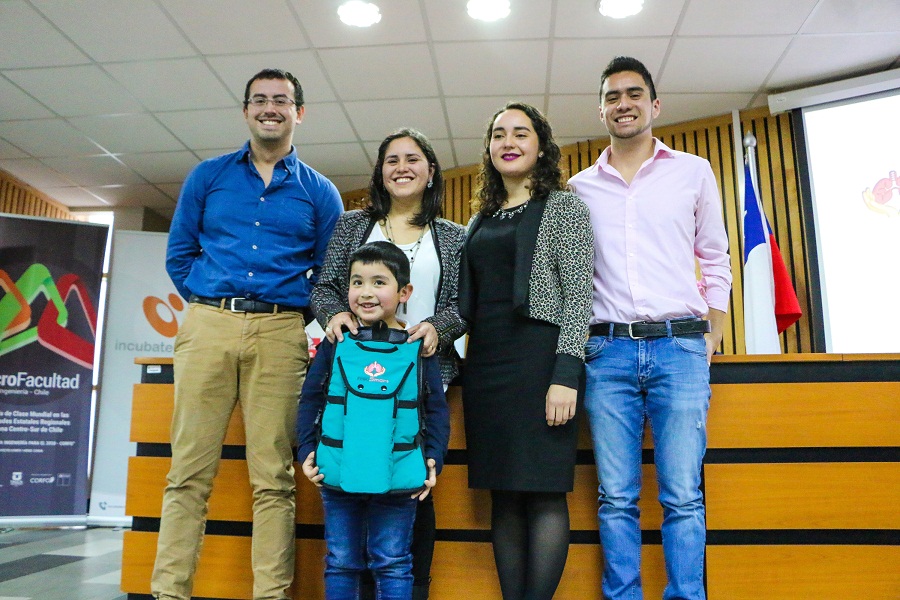|
The project, which is led by students in engineering, business engineering and physiotherapy, aspires to be a creative solution that is easy to use and maintain, eye-catching and of low cost.
|
The group of students of the Universidad de La Frontera presented this innovative device that is meant to turn into an alternative or complementary solution for physiotherapy in children with chronic bronchial diseases.
“Fisiosmart” is the name of this vibration vest that has been elaborated to remove secretions in 2 to 12 year old children that aspires to be a creative solution that is easy to use and maintain, eye-catching and of low cost.
The device has been created by students of the Macro Faculty of Engineering in Chile and students in physiotherapy. It is designed to show its effectiveness in a short period of time. It is made of a net of motors with counterweight, which are connected to a wide pulse modulating circuit, with a potentiometer that permits to regulate the vibrations frequency according to the physical properties of the secretions, acting directly on them, what facilitates its elimination.
At the beginning, the project was financed by the Macro Faculty of Engineering in Chile (through the competition “Experimentando”) and, afterwards, by the Regional Support Program for Entrepreneurs (PRAE) of the Production Development Corporation (CORFO). The vest was presented at the UFRO thanks to the alliance the team of students made with the private company for its development.
“We have an application that controls this device and allows to use three vibration modes and three frequencies, from 100 to 300 hertz. The vest allows to remove the secretion in children and avoids that a basic disease turns into something more complex,” José Luis Portiño, graduate in Civil Industrial Engineering with specialization in Mechanics and the director of the project, explained.
In this context, Franco Pérez, the CORFO technical executive, said: “It is important to support entrepreneurship linked to the fields that have certain problems nowadays. The students applied for PRAE funds and received funding of 15 million Chilean pesos, what allowed them to develop the working prototype of their project.”
Rodrigo Navia, dean of the Faculty of Engineering and Science, emphasized the multidisciplinary work of students from three different faculties for the realization of this initiative.
“This project has been particularly successful because they managed to leverage CORFO funds and the advice of Incubatec in order to put the product on the market with an appropriate business model. This shows that our students are not only able to work on issues of social impact, but also can develop, design and prototype products of commercial interest,” he said.
ACCESSIBLE TO PATIENTS
Although devices that are similar to the one that has been developed by the UFRO students do already exist on the market, the high costs make it difficult to acquire them. “There are vests that cost between 15 and 20 thousand dollars. We reduced this price considerably and arrived at a figure close to a million Chilean pesos. In an economy of scale, this price can be reduce even more,” José Portiño sustained.
Finally, Valeska Geldres, the dean of the Faculty of Law and Business, expressed: “For us, it is a fact that entrepreneurship at a young age is possible. When you take the plunge, you have to take calculated risks and that means you have to associate yourself with people of other disciplines and experiences, what has been shown in the present case.”
 Written by: Mauricio Antivil Macro Faculty of Engineering
|
 Written by: Mauricio Antivil
Written by: Mauricio Antivil





